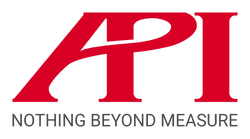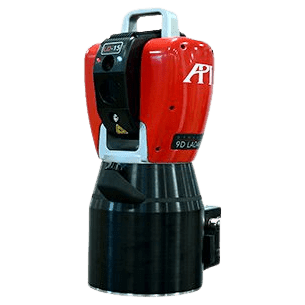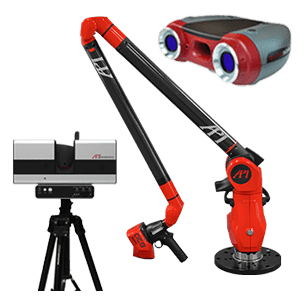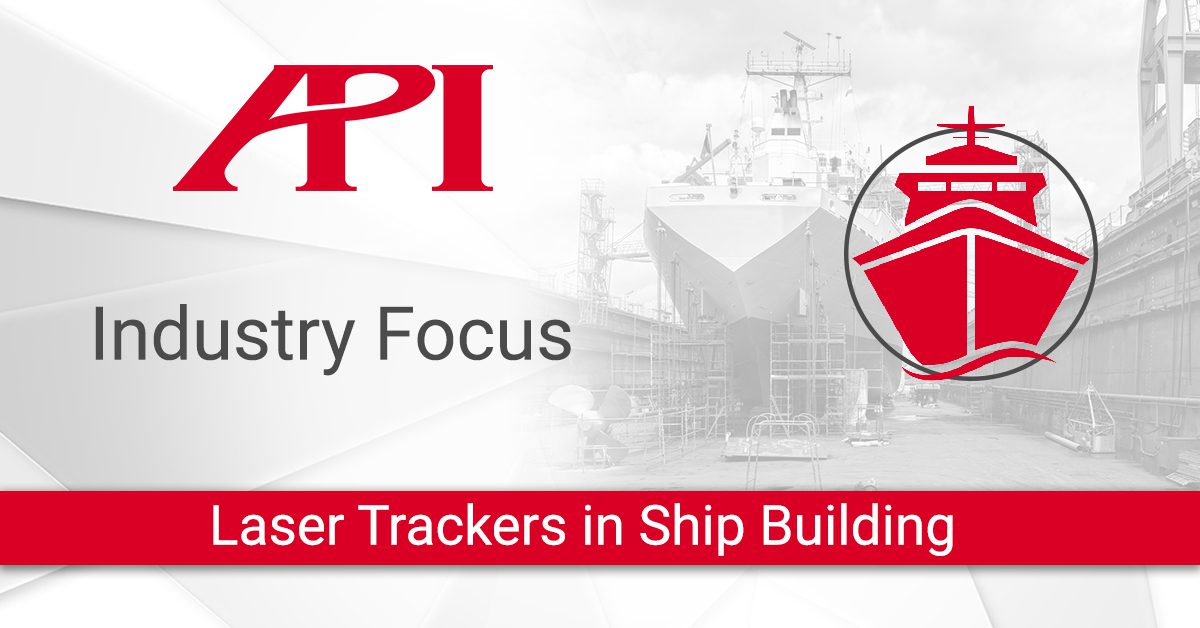The shipbuilding industry is a critical user of Laser Trackers for dimensional metrology applications all throughout their machining and assembly processes. The main advantage of Tracker use in shipbuilding is to maximize the value and productivity in crane time. The crane is the most essential piece of equipment in the shipyard, but it is also the most expensive to run.
In the past, the crane would hold a machined piece or ship unit in place for upwards of one to two days, as the piece was measured against the drydocked ship unit it will be fit to. Then, if re-work was needed on the part, it was let down from the crane, taken back into the shop, re cut, and the process began again.
Today, these built parts can be measured by a Laser Tracker in the shop. Then, the drydocked ship can be measured in the yard by the same Tracker. The Tracker’s Metrology software can then overlay the data from the two measurements and create a best fit alignment for the as-built parts. Re-work can be done in shop, and the crane’s valuable time is only used for the final welding assembly.
Below are some of the many surveying and alignment applications that have now become common place for Laser Trackers within the shipbuilding industry. Laser Tracker benefits include portability, ease of operation, consistency of measured data, short- and long-range measuring capability, and immediate feedback of measurement allowing real-time adjustments.
Pre-Cut of Ship Units
The Laser Tracker can survey one ship unit anywhere in the shipyard. The unit is already prepped and ready to be fit to the as-built ship in drydock. Laser Tracker Operators will survey the neat edge, using center, buttock, water, and framework lines to align it to the ship in drydock. Then they will take the Tracker and measure the material on the adjoining unit, along with the same reference lines on the ship in drydock to create a best fit model for welding them together. End users can use the Tracker’s Metrology software to take data points to identify a cut package to align the new part to the drydocked ship unit.
Survey Nuclear Components
The Laser Tracker is used to survey all nuclear components before they are loaded into a carrier or submarine. The Reactor Vessel is measured to collect as-built data for all its features, and it is monitored as it is laid into the ship. This eliminates re-work in the field and creates an as-built reference that is close to the production design for welding.
Monitoring Critical Components
Once the nuclear components are welded down, the Tracker is used to survey the inlet and outlet nozzles for reactor loop (steam generators, reactor coolant pump, and the pressurizer). The Laser Tracker is used to survey each pipe’s location, plane, and center point for as-built conditions. The data is used to create a new model for the pipefitter to create template heads in the shop that match the actual pipe on the ship in drydock. The Tracker also provides height and work lines for each pipe that will help simulate fit-up as it should be on the ship. The Tracker allows these template heads to be made in shop, and then placed in one setup. Without a Tracker, the heavy pipe needs to be craned in, laid on the ship in full, measured, marked, unloaded, sent back to shop or worked on the ship, and recut. Then the fit-up process would begin again. These evolutions could revolve three or four times before a proper fit-up is achieved.
Shipboard Appendages
In addition to nuclear components and piping, the Tracker is used to measure appendages that fit-up to the ship body. The bow and stern planes and sail of a submarine, the island house of an aircraft carrier and rudders stocks and bores on carriers and submarines are all given the same pre-cut process as other essential parts before assembly. For some of these parts, the pre-cut and assembly measurements are more complicated as they require angled cuts for mounting as opposed to straight horizontal or vertical cuts. For example, the submarine’s dihedral must be set to a certain pitch, roll, and yaw on the actual body of the submarine. The tracker is essential in determining these angled cuts based on the as-built shape of the submarine.
Foundation Alignment
Precision alignment for foundations eliminates a lot of the leg work and time conxumption of conventional measurement, using the Laser Tracker to align, level, and mill the foundations on the ship. Laser Trackers replace conventional methods of alignment, locating and transferring reference coordinate systems to the areas of work for the foundations, and then the end users of the trackers assist with welding and milling the foundations.
Shaft Alignment
An example of one of the processes used on shaft alignment is as follows: Establish “relocation nests”/Benchmarks in each of the spaces containing bearings for the system. The tracker user can then measure the existing centers of components or bearings that have not been modified. It is preferred that the components or bearings being used at this stage are of the greatest distance apart from each other. After these component centers are measured, an as found centerline (CL) will be established. After the CL has been established, API can assist the mechanics in locating centers of the new bearings horizontally to align with the existing Centerline.










